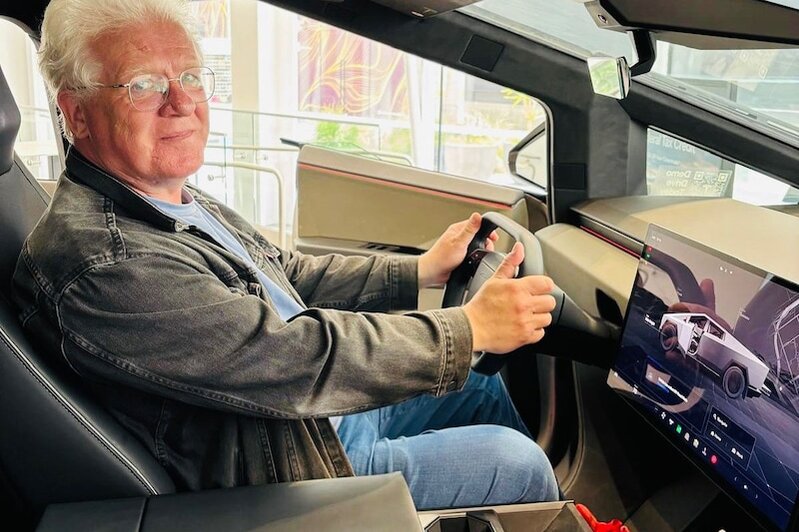
They were awful and fantastic, those two thousand car miles in two weeks in California. A few things stood out. The dramatic condition of most roads. The incredible traffic congestion in the big cities. The relative popularity of the Tesla Cybertruck and the Rivian models, including the pickup versions. The numbers of Japanese cars that you never see in Europe, wonderful viewing material for spotters like yours truly. The still ridiculously low gasoline prices, converted to just over one euro per liter. Or the fact that ordinary Teslas are also completely integrated here.
Yet the fossil nature of the mainstream vehicle fleet is particularly striking. It runs on gasoline, a lot of gasoline. You can hear it in the sound of the traffic noise. In Los Angeles, San Francisco and Las Vegas, you can hear the heavy, dull, six- and eight-cylinder-greased drone of gradually electrified and never-resting traffic masses in your hotel room above the air conditioning at night.
The love for gasoline runs deep here. During the day, you see Americans clinging to the combustion engine in an old-fashioned way. They like to accelerate, and what we call noise pollution is public recreation here. You see bizarrely many new Corvettes, unprecedented and deservedly popular here, acoustically putting the flowers outside for every traffic light. On the Strip in Las Vegas, every casino boss floors the accelerator of his G-Class or 911. The four-door Dodge Charger models, whether or not tweaked, are possibly even louder. The drivers produce an apocalyptic smallpox noise with devilish pleasure that is greatly appreciated by drivers and the public. The irritation about this type of behavior, which is felt and visible in the Netherlands, is nowhere to be found here.
You don’t get happy about much in this country. Not from Trump, nor from the gruesome homelessness problem. But the love of cars is balm for the soul. I remember as if it were yesterday the appreciative look from a passer-by when I parked a Dodge Viper at a bus stop in Los Angeles for a photo. ‘Congratulations!’, the man said. Not a bad word about my illegal parking maneuver. In the Netherlands I would have been scolded rotten. But the Americans also like to have sound with it like butter with fish. The electric Charger was not for sale here, that says a lot.
Yet on paper, things are going quite well with the EV in California. Although growth is now leveling off just as in Europe, a quarter of all new cars sold there last year were electric. Only that’s not what you see. On the street you see and hear how far they are from their goal of being emission-free in ten years. California wants to allow only the sale of fully electric cars in 2035, but after a few days of driving in and around LA and long walks through problem neighborhoods – I even stayed there – you wonder how on earth they want to achieve that. The poor people are too poor and a large part of the population doesn’t feel like it, probably also because the charging infrastructure is far behind ours and Trump is not inclined to eliminate that blemish.
The energy transition is a class story much stronger than in our country. You see how in the cities and poor villages the less privileged population still drives around in old metal with four to eight cylinders, thanks to the fuel prices also a relatively affordable pleasure for the lower incomes. In the countryside, large V8 pickups remain defining. The wealthy city districts are swarming with EVs, you don’t see one in poor neighborhoods. There, even the means for maintenance and damage repair are lacking, judging by the miserable condition of many cars. And then you have to remember that you are here in a progressive state where even Republicans like the former governor Arnold Schwarzenegger were warm supporters of the energy transition. In 1990, the California Air Resources Board already forced the construction of electric cars on the seven leading car manufacturers as a condition for access to the California market. Schwarzenegger dreamed in a long-gone past of a Hydrogen Highway, a network of hydrogen stations at strategically relevant locations.
The clean dreams reached to the sky, and too little has come of it. The current stagnation of the mobility transition in Europe must be seen in the framework of this larger story. What we do in this area in terms of efforts does not help on a global scale if others do not take equally proud steps. No matter how hard we keep shouting with the hopeful statistics at hand that sustainability is going in the right direction, the reality is a tough obstacle.